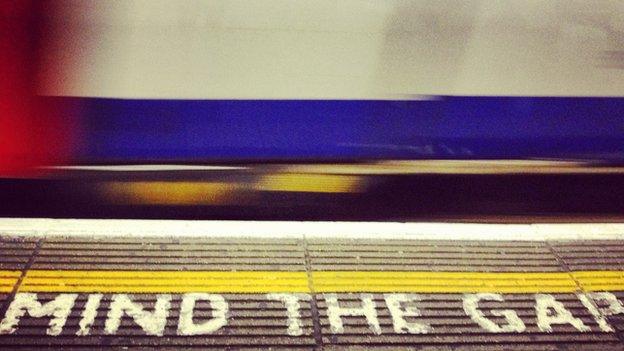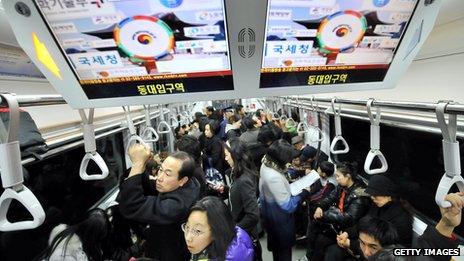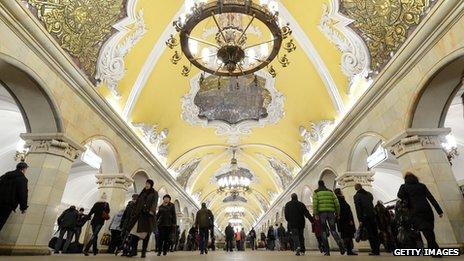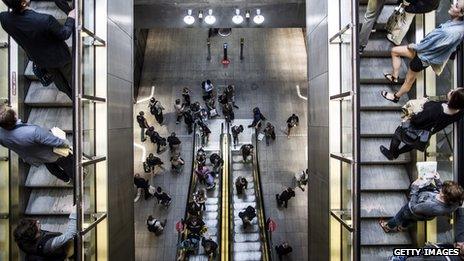London Underground: How does the Tube compare globally?
- Published

Transport for London has announced that all ticket offices will close in 2015
Ticket offices on the London Underground could soon be a thing of the past. But, if the days of a uniformed worker sitting behind a pane of glass are numbered, how have other cities embraced the future?
Transport for London (TfL) has announced that every ticket office on the Tube is to shut by 2015, with the loss of 750 jobs.
The move has provoked the wrath of the RMT union, which has not ruled out strike action in the run-up to Christmas.
Since the construction of the first underground railway line in 1864, other cities around the world have copied London's transport system.
But in the 21st Century, is London's system still the envy of the world and how have other countries embraced the future?
Seoul Metropolitan Subway

Seoul's metro system has heated seats, wifi and 4G reception
It is consistently ranked, external as the best subway system in the world.
The Seoul Metropolitan Subway introduced one of the first contactless tickets in 1996, whereas London's Oyster Card only began life in 2003.
Commuters can also use their smartphones to pay for travel at ticket barriers.
And, all carriages in Seoul have wifi, 4G access and TV screens. They even have heated seats in the winter.
But despite this seemingly futuristic system, London is similar in one crucial respect - Seoul still has ticket offices at its stations.
Moscow Metro

The Komsomolskaya Metro Station was ornately decorated during the Soviet-era
Believed to be the second most-used metro system in the world after Seoul, it is also perhaps the most beautiful.
The lavish decorations at stations like Komsomolskaya were ordered by Stalin, intended to inspire awe in passengers.
However, the metro service is not stuck in the past.
It is thought to have been the first to completely phase out, external paper tickets, favouring the contactless payment system like London's Oyster.
However, even with the latest announcements from TfL, paper tickets seem set to continue at Tube stations for the foreseeable future.
Tokyo Metro

Attendants push people on to trains during the rush hour in Tokyo
It is unlikely that London's ticket staff, who will be moved out of the office and on to the platform, will be pushing commuters on to trains.
But in rush hour Tokyo, attendants have to forcibly shove travellers into carriages to make the most of available space.
Regular tickets are purchased there with automated vending machines, doing away completely with ticket offices.
However, in a select few stations there are staff available to directly sell you multiple, or special season, tickets.
Copenhagen Metro

The Copenhagen Metro is fully-automated and operates 24 hours a day
With its driverless trains, Copenhagen is perhaps the paradise that many would like to see London Underground become.
The fully-automated system operates 24 hours a day, seven days a week, with a new circular line opening in 2018.
A control room keeps watch over the trains as they travel on set arrival and departure times.
Passengers also have the ability to make direct radio contact with the control room from the train.
Despite the driverless Docklands Light Railway being in operation since 1987, other lines in London all have drivers.
Mayor Boris Johnson promised driverless trains in London by 2012 to cut costs, with the current starting salary for a Tube driver being about £44,000.
- Published21 November 2013
- Published21 March 2013
- Published21 November 2013
- Published20 November 2013
- Published12 September 2013
- Published22 August 2013
- Published26 June 2013
- Published26 April 2013